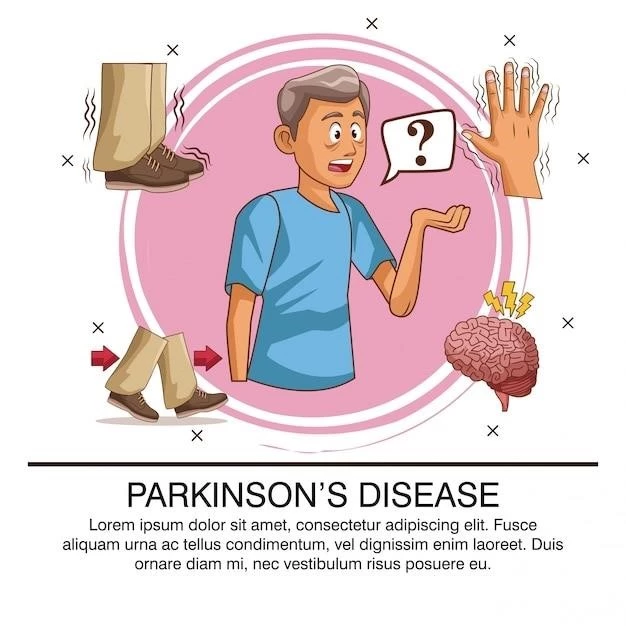Introduction to Waardenburg Syndrome
Waardenburg syndrome (WS) is a genetic disorder characterized by varying degrees of deafness and abnormalities in structures deriving from neural crest cells, including pigmentation anomalies of the eyes, hair, and skin. It is inherited in an autosomal dominant manner and manifests through an abnormal distribution of melanocytes during embryonic development. This rare condition was first described in 1951 by Dutch ophthalmologist Petrus Johannes Waardenburg.
Waardenburg syndrome (WS) is a genetic disorder that affects skin, eyes, hair, and hearing due to abnormal distribution of melanocytes during embryonic development. Named after Dutch ophthalmologist Petrus Johannes Waardenburg, it manifests through pigmentary disturbances and sensorineural hearing loss. This rare condition is inherited in an autosomal dominant manner, impacting individuals globally across various races and genders. Different types exist, each with distinct characteristics and inheritance patterns.
Definition and Overview
Waardenburg syndrome (WS) is a genetic disorder involving skin, eye, hair, and hearing abnormalities, typically inherited in an autosomal dominant manner. This syndrome results from an abnormal distribution of melanocytes during embryonic development, leading to various pigmentation disturbances and sensorineural hearing loss. Named after Dutch ophthalmologist Petrus Johannes Waardenburg, the condition exhibits global prevalence across diverse populations.
Autosomal Dominant Inheritance
Waardenburg syndrome is predominantly inherited in an autosomal dominant pattern, meaning that only one copy of the altered gene in each cell is sufficient to cause the disorder. This genetic basis leads to the manifestation of various characteristic features associated with the syndrome. Understanding the genetic inheritance pattern is crucial in diagnosing and managing individuals affected by Waardenburg syndrome.
Abnormal Distribution of Melanocytes
One of the key characteristics of Waardenburg syndrome is the abnormal distribution of melanocytes during embryonic development. This leads to pigmentary disturbances affecting the eyes, hair, and skin. The disrupted melanocyte migration results in unique features such as two different colored eyes, a white forelock, and patches of depigmented skin. Understanding this melanocyte anomaly is crucial in diagnosing and differentiating Waardenburg syndrome.
Clinical Features of Waardenburg Syndrome
Waardenburg syndrome presents with a wide array of clinical features, including pigmentary disturbances affecting the eyes, skin, and hair, as well as sensorineural hearing loss. These characteristic manifestations are primarily attributed to the abnormal distribution of melanocytes during embryonic development, leading to distinct physical traits associated with the syndrome.
Pigmentary Disturbances
One of the primary clinical features of Waardenburg syndrome includes pigmentary disturbances affecting the eyes, skin, and hair. These anomalies result from the abnormal distribution of melanocytes during embryonic development, leading to distinct phenotypic characteristics such as two different colored eyes, a white forelock, and patches of depigmented skin. Understanding these pigmentary abnormalities is essential in diagnosing and managing Waardenburg syndrome.
Sensorineural Hearing Loss
Waardenburg syndrome commonly presents with sensorineural hearing loss as a clinical feature. This type of hearing impairment results from abnormalities in the inner ear or auditory nerve pathways. The hearing loss associated with Waardenburg syndrome may range from mild to profound and can impact individuals from an early age. Early identification and intervention are critical in managing the hearing difficulties experienced by individuals with Waardenburg syndrome.
Types of Waardenburg Syndrome
Waardenburg syndrome encompasses various types, such as Types I and II, along with less common variants like Type III (Klein-Waardenburg Syndrome) and Type IV (Waardenburg-Shah Syndrome). Each type presents distinctive features and inheritance patterns associated with this genetic disorder.
Type I and Type II
Waardenburg Syndrome includes Type I and Type II, characterized by auditory-pigmentary features. Type I exhibits dystopia canthorum and congenital sensorineural hearing loss. In contrast, Type II presents with moderate to profound deafness, distinguishing it from Type I by the absence of dystopia canthorum.
Type III (Klein-Waardenburg Syndrome) and Type IV (Waardenburg-Shah Syndrome)
Waardenburg Syndrome includes rarer types like Type III (Klein-Waardenburg Syndrome) and Type IV (Waardenburg-Shah Syndrome). These variants exhibit unique manifestations and genetic characteristics distinct from Type I and Type II, contributing to the complexity of this genetic disorder.
Diagnosis and Differential Diagnosis
Diagnosing Waardenburg syndrome involves recognizing the characteristic clinical features of pigmentary disturbances and sensorineural hearing loss. Differential diagnosis is crucial to distinguish Waardenburg syndrome from other conditions presenting similar symptoms, ensuring accurate management and intervention strategies.
Identification of Genetic Mutations
Diagnosing Waardenburg syndrome involves identifying specific genetic mutations associated with the disorder. Genetic testing plays a crucial role in confirming the presence of mutations in genes related to Waardenburg syndrome, allowing for accurate diagnosis and further understanding of the genetic basis of the condition.
Accurately distinguishing Waardenburg syndrome from other syndromes with overlapping symptoms is crucial for appropriate diagnosis and tailored management strategies. Differentiating factors include characteristic pigmentary disturbances, sensory neural hearing loss, and specific genetic mutations associated with Waardenburg syndrome, setting it apart from similar syndromes with distinct etiologies.
Management and Treatment Approaches
Managing Waardenburg syndrome involves a multidisciplinary care team that addresses the diverse needs of individuals with this condition. Therapies targeting hearing loss and pigmentation abnormalities play a crucial role in enhancing quality of life and addressing specific challenges associated with this genetic disorder.
Distinguishing Waardenburg Syndrome from Other Syndromes
To distinguish Waardenburg syndrome from other syndromes, clinicians rely on recognizing the distinct combination of symptoms, including pigmentary disturbances and sensorineural hearing loss. Genetic testing aids in confirming the diagnosis by identifying specific mutations associated with Waardenburg syndrome, ensuring appropriate management strategies for affected individuals.
Available Therapies for Hearing Loss and Pigmentation Abnormalities
Therapeutic approaches for Waardenburg syndrome focus on managing hearing loss and addressing pigmentation abnormalities. Interventions may include hearing aids, cochlear implants, and cosmetic treatments for skin and hair pigmentation alterations. Multidisciplinary care teams collaborate to provide tailored therapies to improve the quality of life for individuals with Waardenburg syndrome;
Prognosis and Complications
Prognosis varies in Waardenburg syndrome, with some individuals experiencing minor defects while others may face complications such as a slight decrease in intellectual function. Understanding the potential long-term health concerns and impact on quality of life is essential in managing the diverse outcomes associated with this genetic disorder.
Impact on Quality of Life
Individuals with Waardenburg syndrome may experience a minor decrease in intellectual function, potentially impacting their overall quality of life. Understanding the implications of this genetic disorder on cognitive abilities is essential in providing comprehensive care and support to affected individuals to ensure an optimal quality of life.
Long-term health concerns associated with Waardenburg syndrome may include a slight decrease in intellectual function. Understanding and addressing potential cognitive implications is crucial in providing comprehensive care to individuals with this genetic disorder to optimize their overall well-being.
Potential Long-Term Health Concerns
Long-term health concerns in Waardenburg syndrome may include a slight decrease in intellectual function, impacting the overall well-being of affected individuals. Monitoring and addressing cognitive implications are crucial in providing comprehensive care for individuals with this genetic disorder.
Studies on Genetic Variants
Ongoing studies focus on elucidating the genetic variants associated with Waardenburg syndrome to enhance diagnostic accuracy and develop targeted treatment approaches. Understanding the underlying genetic mutations is pivotal in advancing precision medicine strategies for individuals affected by this genetic disorder.
Novel Therapeutic Strategies
Emerging therapeutic strategies for Waardenburg syndrome focus on innovative approaches to address hearing loss and pigmentation abnormalities. Research efforts aim to develop novel interventions and treatments that target the specific genetic aspects of the syndrome, offering potential advancements in managing this complex genetic disorder.
Epidemiology of Waardenburg Syndrome
Waardenburg syndrome affects individuals worldwide with equal prevalence across sexes. Both immediate and postnatal recognition of this congenital condition is crucial for appropriate management and intervention strategies. Its inheritance pattern and associated symptoms may vary but are integral to early diagnosis and support.
Global Prevalence and Distribution
Waardenburg syndrome has a global presence, affecting individuals of various races and genders equally. This congenital condition requires early recognition and diagnosis to implement appropriate management strategies and support for affected individuals. Surveillance and prompt intervention are essential components in addressing this condition.
Waardenburg syndrome affects individuals of all sexes equally, while the onset of symptoms typically manifests at birth. Understanding the sex and age patterns associated with this condition aids in early recognition and timely intervention to address the diverse needs and potential complications of affected individuals.
Support Resources for Patients and Families
Offering patient advocacy organizations and counseling services can provide essential support and guidance to individuals and families affected by Waardenburg syndrome. Accessing educational resources and support networks can help navigate the complexities of this genetic disorder and improve overall well-being.
Sex and Age Patterns in Affected Individuals
Waardenburg syndrome affects individuals of all sexes equally, and symptoms typically present at birth. Recognizing the sex and age patterns associated with this condition is crucial for early detection and intervention to address the specific needs and challenges faced by affected individuals.
Counseling and Educational Services
Providing counseling and educational services can be instrumental in supporting individuals and families affected by Waardenburg syndrome. These resources offer guidance, information, and emotional support to navigate the challenges associated with this genetic condition and make informed decisions regarding treatment and management options.
Case Studies and Clinical Presentations
Examining real-life cases of individuals with Waardenburg syndrome offers valuable insights into the varied clinical presentations and challenges faced by affected individuals. These case studies provide a deeper understanding of the complexity of this genetic disorder and the impact it has on individuals’ lives.
Real-Life Examples of Waardenburg Syndrome Cases
Examining real-life cases of individuals with Waardenburg syndrome provides valuable insights into the diverse clinical presentations and challenges experienced by affected individuals. These cases offer a deeper understanding of the complexities of this genetic disorder and the implications it has on individuals’ lives.
Examining the diagnostic challenges in Waardenburg syndrome cases offers valuable insights into improving early recognition and accurate diagnosis. Understanding the complexities and variations in clinical presentations can enhance healthcare practitioners’ ability to provide timely intervention and comprehensive care for affected individuals.

Ethical and Social Implications
Understanding the ethical and social implications of Waardenburg syndrome is crucial for providing appropriate genetic counseling and informed decision-making for individuals and families affected by this condition. Addressing stigma and promoting a supportive environment is essential for enhancing the well-being of those with Waardenburg syndrome.
Lessons Learned from Diagnostic Challenges
Examining diagnostic challenges in Waardenburg syndrome cases provides insights into improving early detection and accurate diagnosis. Understanding the varied clinical presentations facilitates timely interventions and comprehensive care provision for affected individuals;
The presence of stigma and societal perceptions can influence the experiences of individuals with Waardenburg syndrome. Addressing these challenges is essential to foster greater awareness, acceptance, and support for individuals living with this genetic condition, promoting inclusivity and understanding in various social contexts.
The societal stigma and perceptions surrounding individuals with Waardenburg syndrome can influence their experiences and well-being. Understanding and addressing these social challenges are essential to promote acceptance, foster awareness, and provide support for individuals living with this genetic condition.
Stigma and Perception of Individuals with Waardenburg Syndrome
Societal stigma and perceptions can impact individuals with Waardenburg syndrome. Addressing these challenges is vital to promote awareness, support, and acceptance for those living with this genetic condition.
Addressing gaps in knowledge and awareness of Waardenburg syndrome is essential to enhance early recognition, accurate diagnosis, and appropriate management of this genetic condition. Increasing awareness and education can lead to improved support and care for individuals affected by this syndrome.
Enhancing awareness and knowledge of Waardenburg syndrome is crucial for early detection, accurate diagnosis, and effective management of this genetic condition. By addressing gaps in understanding, healthcare professionals can better support individuals affected by Waardenburg syndrome and improve clinical outcomes.
Addressing Gaps in Knowledge and Awareness
Enhancing knowledge and awareness of Waardenburg syndrome is crucial for early detection, accurate diagnosis, and effective management. Educating healthcare professionals and the public can lead to improved support and care for individuals impacted by this genetic condition.
Interdisciplinary Research Initiatives
Collaborative interdisciplinary research initiatives play a vital role in advancing the understanding of Waardenburg syndrome. By fostering partnerships among experts in various fields, innovative approaches and insights can be gained to further enhance the knowledge and management of this genetic disorder.

Conclusion
In conclusion, Waardenburg syndrome is a complex genetic condition that requires multidisciplinary care and support. Collaborative efforts in research, interdisciplinary initiatives, and increasing knowledge and awareness are crucial in advancing precision medicine approaches and addressing the challenges faced by individuals living with this syndrome. By promoting acceptance and understanding and enhancing early detection and management strategies, we can improve the quality of life for those affected by Waardenburg syndrome.
